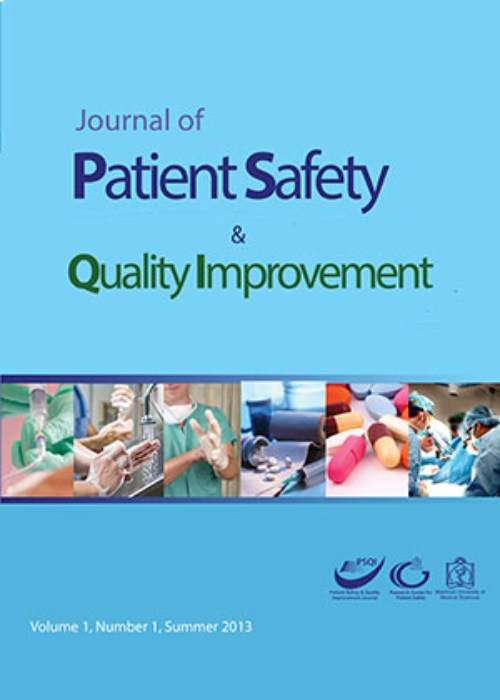Patient Safety Leadership Walkrounds: Promoting a Safety Culture in Developing Countries
Author(s):
Abstract:
Patient safety is the cornerstone of health care quality and governance(1). Globally the emergence of what could be regarded as a patient safety movementcan be attributed to the following: firstly, health care organizations were trailing to develop and promote a positive attitude and safety culture(2). Secondly, apositive patient safety culture is one in which every individual, providing the care, should have the necessaryknowledge, understanding and is competent in skills of risk evaluation and reduction. Thirdly, where safety is a potential issue individuals should be encouraged and supported to promote changes through education and training(3). Fourthly, promotion patient safety culture interventions need to be rooted in the principles of teamwork, hospital leadership and behavioural change(4). Finally, an effective way to translate clinical leadership into health care quality improvement and patient safety is to focus on promoting the principles aligned to a duty of candour into frontline practice (5).
Various interventions and strategies are available to improve safety culture(3). For example, Patient Safety Leadership Walkrounds (PSLW) is a strategy engaging directly hospital leadership with frontline staff(4, 6). A multidisciplinary team of hospital executives visit the patient care areas in hospital to observe and identify the current and potential risks and discuss with the frontline care providers to eliminate them. In a walkround, the team and staff discus about safety issues only and they plan to improve safety issues (such as safety culture, equipment, patient safety, building safety and etc).Walkrounds show the commitment of hospital leadership and foster trust and psychological support for frontline staff(7).
The way forward for hospitals, especially in developing countries with restricted resources, where urgent interventions are required like patient safety leadership walkrounds. The aim of this initiative is to improve safety culture, care effectiveness and patients outcomes. It brings leadership commitment to the front-line efforts to improve patient safety.
Various interventions and strategies are available to improve safety culture(3). For example, Patient Safety Leadership Walkrounds (PSLW) is a strategy engaging directly hospital leadership with frontline staff(4, 6). A multidisciplinary team of hospital executives visit the patient care areas in hospital to observe and identify the current and potential risks and discuss with the frontline care providers to eliminate them. In a walkround, the team and staff discus about safety issues only and they plan to improve safety issues (such as safety culture, equipment, patient safety, building safety and etc).Walkrounds show the commitment of hospital leadership and foster trust and psychological support for frontline staff(7).
The way forward for hospitals, especially in developing countries with restricted resources, where urgent interventions are required like patient safety leadership walkrounds. The aim of this initiative is to improve safety culture, care effectiveness and patients outcomes. It brings leadership commitment to the front-line efforts to improve patient safety.
Language:
English
Published:
Journal Of Patient safety and quality improvement, Volume:4 Issue: 4, Automn 2016
Pages:
426 to 426
magiran.com/p1596453
دانلود و مطالعه متن این مقاله با یکی از روشهای زیر امکان پذیر است:
اشتراک شخصی
با عضویت و پرداخت آنلاین حق اشتراک یکساله به مبلغ 1,390,000ريال میتوانید 70 عنوان مطلب دانلود کنید!
اشتراک سازمانی
به کتابخانه دانشگاه یا محل کار خود پیشنهاد کنید تا اشتراک سازمانی این پایگاه را برای دسترسی نامحدود همه کاربران به متن مطالب تهیه نمایند!
توجه!
- حق عضویت دریافتی صرف حمایت از نشریات عضو و نگهداری، تکمیل و توسعه مگیران میشود.
- پرداخت حق اشتراک و دانلود مقالات اجازه بازنشر آن در سایر رسانههای چاپی و دیجیتال را به کاربر نمیدهد.
دسترسی سراسری کاربران دانشگاه پیام نور!
اعضای هیئت علمی و دانشجویان دانشگاه پیام نور در سراسر کشور، در صورت ثبت نام با ایمیل دانشگاهی، تا پایان فروردین ماه 1403 به مقالات سایت دسترسی خواهند داشت!
In order to view content subscription is required
Personal subscription
Subscribe magiran.com for 70 € euros via PayPal and download 70 articles during a year.
Organization subscription
Please contact us to subscribe your university or library for unlimited access!


